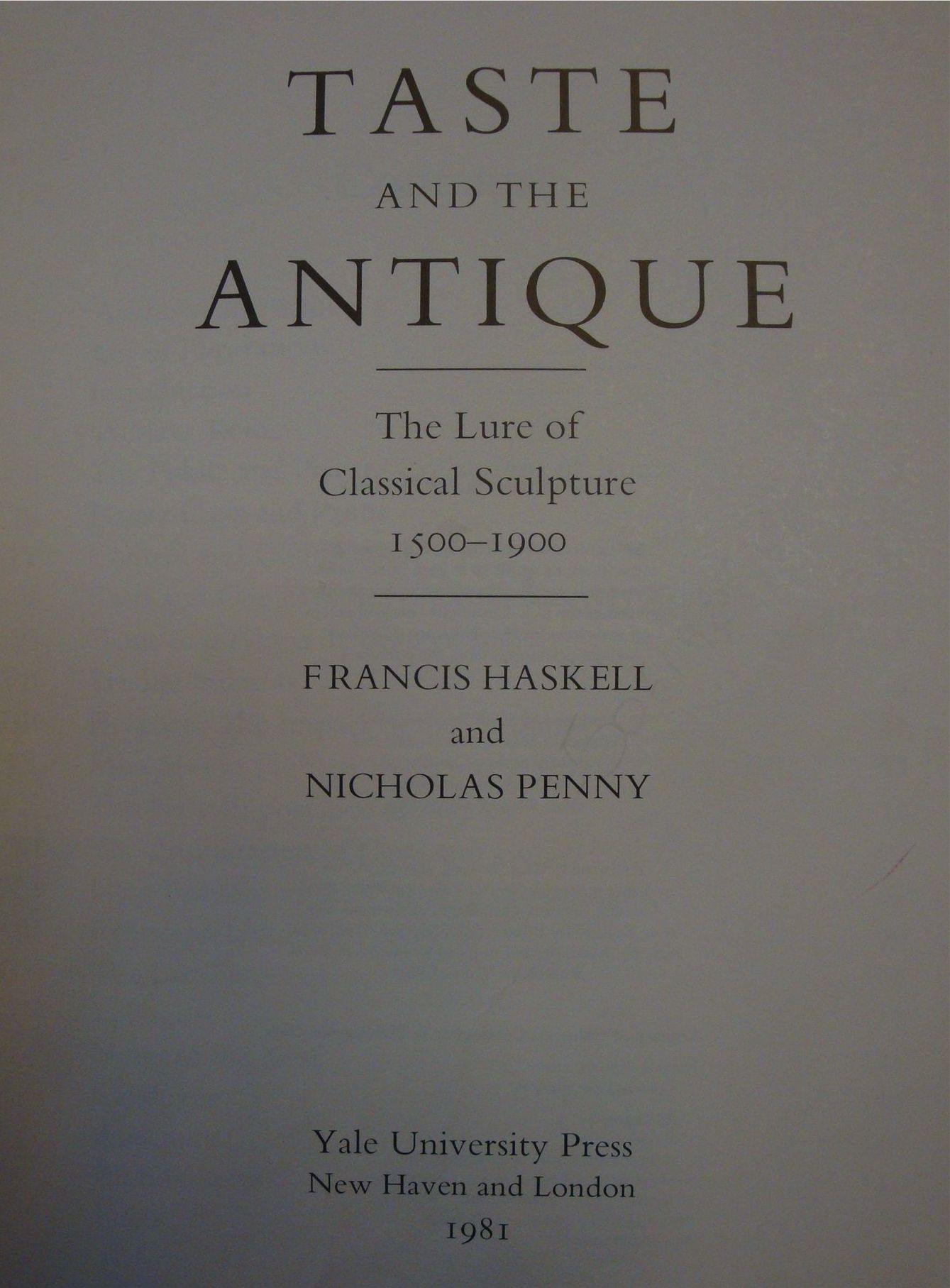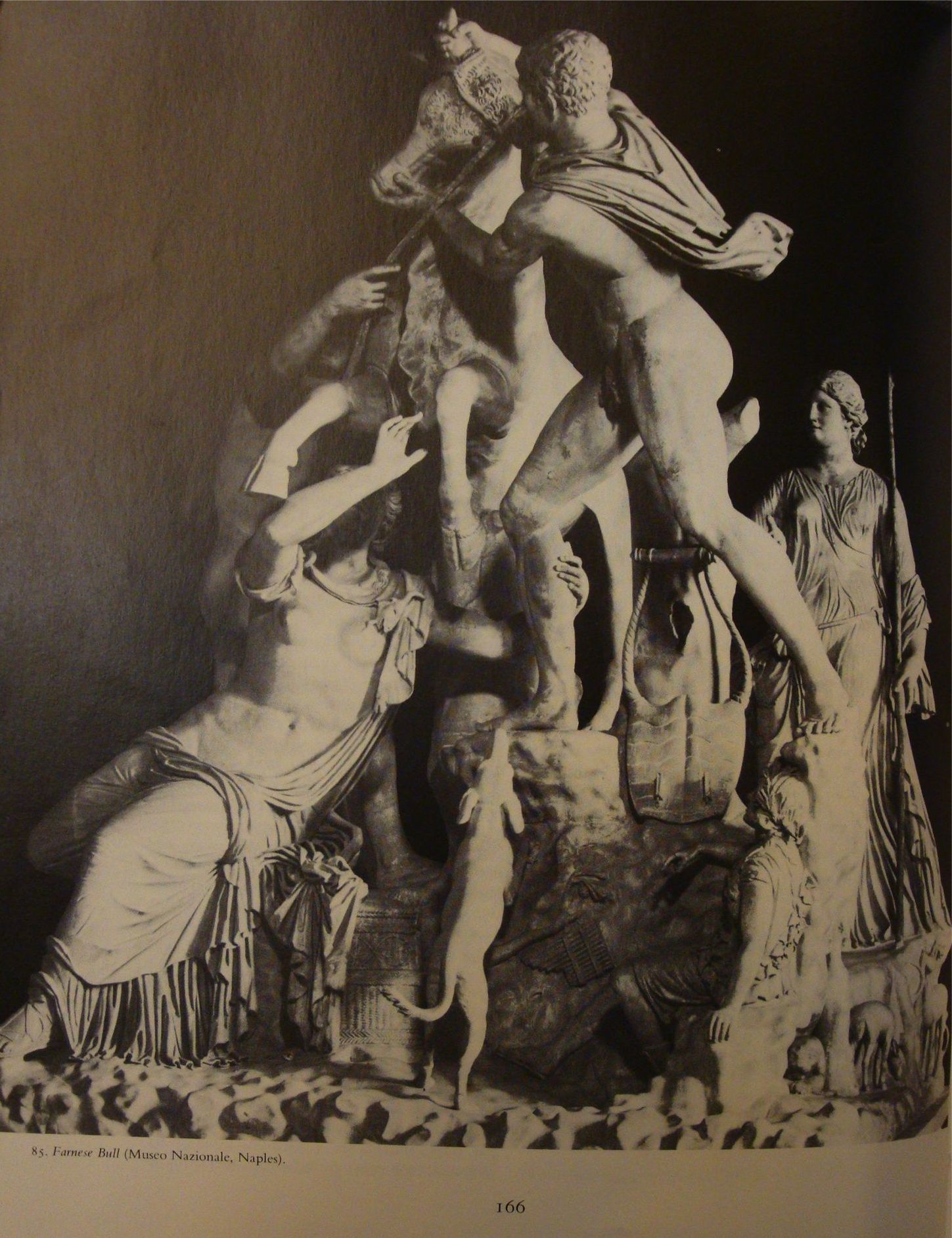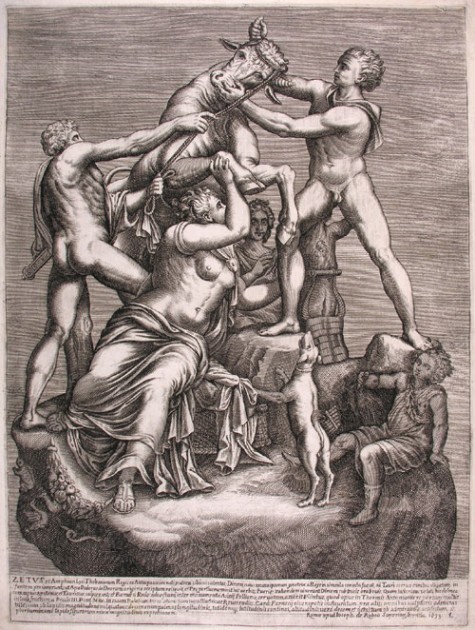The Farnese Bull, A Bronze and Dark Brown Patina Sculptural Group
Cast after the Antique by Michele Amodio, circa 1880
Inscribed on the base Amodio Naples
The sculpture: 23 5/8 in (60 cm) high, 18 ¼ in (46.5 cm) square
The pedestal: 39 3/8 in (100 cm) high
Provenance
Halsted B. Vander Poel (1911-2003), New York
cf. F. Haskell and N. Penny, Taste and the Antique, The Lure of Classical Sculpture 1500-1900, 1981, pp.165-7, no.15
The Farnese Bull was discovered in 1545 in the Baths of Caracalla in Rome. It soon became one of the most famous antique marbles, principally due to its enormous size. The group represents The Punishment of Dirce, the Greek fable in which Dirce, the wife of Licus King of Thebes, was tied to a wild bull for mistreating her husband’s first wife Antiope. Soon after its discovery, the marble was acquired by the Farnese family. In 1788 it was transported to Naples and eventually installed in the Museo Nazionale, where it remains. The present bronze would have appealed especially to Grand Tourists for whom a stay in Naples was an essential part of their Italian itinerary, after the discovery of the ancient sites at Herculaneum and Pompeii in the mid-18th century.


















